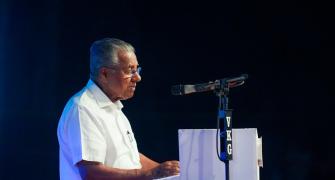For a direct indication of the premium attached to efficiently-run ports in India, one need look no further than the recent stock market listing of Mundra Port and Special Economic Zone.
The port, India's largest privately-owned facility, is being developed in Gujarat, western India by the Adani group. Shares in the port more than doubled on their trading debut in Mumbai, and the company's initial public offering was more than 100 times subscribed.
The reason for the investor enthusiasm is simple. India's ports are chronically overloaded and there is not enough new capacity of the type being built at Mundra to alleviate the problem in the foreseeable future.
Shipping lines delivering containers to India are forced to choose whether potentially to spend days waiting at its main congested deep draft ports or to opt for trans-shipment hubs, such as Colombo or Singapore. From these hubs, cargo can be loaded on to feeder vessels, which attract lower port fees and can dock at smaller facilities.
"In about six years, the capacity of India's ports needs to double and that, I think, is a big challenge," says Amit Desai, executive director of Mundra Port. "The new capacity currently being tendered is . . . a tiny part of this total."
India's bigger ports handled 5.4m containers in the financial year to March, with total volume rising at a compound annual rate of 14 per cent over the past five years.
Efficiency has improved radically from the bad old days of the mid-1980s, when a ship could wallow for an average 12 days in an Indian harbour waiting to be unloaded. But India, with an average ship turnaround time today of 3.5 days, still badly lags east Asia's average of 13 hours. In Hong Kong, the figure is as low as 10 hours.
The main port is the bustling Jawaharlal Nehru Port (JNP), a short boat ride across the bay from Mumbai, India's financial capital. The port is a showcase of foreign investment the two container terminals at the port are operated by mainly foreign-owned companies and are fitted out with modern equipment and are as efficient as that in many European ports.
But JNP, which handled 3.3m 20ft equivalent units (TEUs) last year, is operating at overcapacity, meaning it takes only one hitch to cause significant delays. Mr Desai says ports in India on average operate at 91 to 92 per cent capacity. Being a seasonal business, ports should operate at closer to 70 per cent so that they do not become overloaded during peak times.
"Capacity utilisation of more than 70 per cent will lead to either ships waiting at anchorage or choked backyards on ports, which is what we are in fact seeing at most ports," says Mr Desai.
He says the country is likely to handle 750m tonnes of cargo this year. This implies that it needs 125m to 150m tonnes of new capacity just to bring the utilisation rate down to levels that would reduce the risk of congestion.
To reduce capacity utilisation to acceptable levels and to cater for future growth, some discussion papers postulate that India will need a total of 1.5bn tonnes of handling capacity by 2013-14, double today's level.
Yet new capacity being tendered for construction is only a fraction of what is expected to be needed. A fourth terminal at JNP, that was meant to increase capacity by an estimated 50 per cent, has been affected by delays.
The consequence for shipping lines is that trans-shipment to Indian ports from hubs such as Colombo, Dubai and Singapore is likely to continue. Indeed, Colombo, in anticipation of this trend, is adding new trans-shipment capacity.
An estimated 30 per cent of India's container traffic is moved through trans-shipment, either from international hubs such as Colombo or from mainline ships docking at large Indian ports and using feeder ships to distribute their cargo elsewhere.
Anil Devli, chief executive officer of Shreyas Shipping and Logistics, says cost is a key issue in trans-shipping. A mainline vessel faces port costs of up to about $140,000 a day in India while a feeder vessel costs about 10 per cent of this.
Typically, a mainline vessel might stop off at Colombo or a big Indian port and then offload on to feeder vessels smaller loads of cargo bound for other destinations in the country.
Colombo is convenient for trans-shipping to India because of its location on the significant shipping global routes while Singapore is often preferred because of its role as a large low-cost hub. But Mr Devli says Mundra is also helping to change the picture.
As the port completes its expansion, it will become a trans-shipment point for more cargo, helping to relieve some of the pressure on JNP and giving shipping lines more options.
"Mundra has definitely helped. We are doing a lot of trans-shipment of Karachi cargo into Mundra," he says.
Copyright The Financial Times Limited 2007







